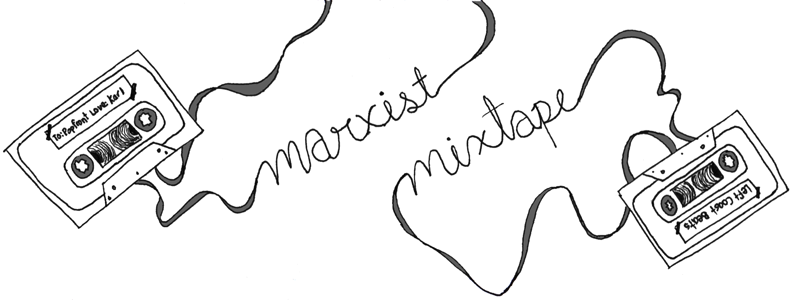“Only hipsters like zombies,” my friend commented as she watched the zombies prance around in Watsky’s “Kill a Hipster” music video. The zombie-hipster metaphor is particularly apt given the racialized origins of both hipsters and zombies: Zombies originated in Afro-Caribbean Haitian folklore—corpses that could be reanimated through necromancy—yet in the past decade that history was mostly forgotten, as the zombie became a semi-humorous staple of Western youth culture (evinced by the popularity of media like the book Zombie Survival Guide [2003] and films 28 Days Later and World War Z).
The hipster, too, has its origins in appropriation of both African American and other cultures—something Norman Mailer first noted, but which Watsky does an effective job of illustrating. “Hummus, hummus, I’m getting hummus, hummus,” he chimes at the zombified hipsters lounging in the park, practicing Spanglish at the taco truck. Watsky and the video hipsters’ adoption of keffiyehs—a symbol of Palestinian resistance that became completely stripped of meaning after its hipster appropriation, on ironic par with Che Guevara shirts—illustrates the same kind of cultural forgetting.
In Mark Greif’s New York Magazine essay “What Was the Hipster?” (probably the best article ever written on the topic), Greif defines the hipster ethos as being about “superior knowledge”:
Hipster, in its revival, referred to an air of knowing about exclusive things before anyone else. The new young strangers acted, as people said then, “hipper than thou.” At first their look may also have overlapped enough with a short-lived moment of neo-Beat and fifties nostalgia (goatees, fedoras, Swingers-style duds) to help call up the term. But these hipsters were white, and singularly unmoved by race and racial integration.
This in turn explains why the phrase “hipster” evolved into an insult: “the neighborhood organization of hipsters—their tight-knit colonies of similar-looking, slouching people—represents not hostility to authority (as among punks or hippies) but a superior community of status where the game of knowing-in-advance can be played with maximum refinement.” Once one’s hipster status is defined—reifing an individual as a hipster—all cred evaporates; defining oneself as knowable and generic destroys any shred of superiority derived from appropriating exoticism and/or the unknowable avant-garde.
In the absence of said advance-guard knowledge, the hipster instead ironically adopts working-class, kitsch staples. In its first twenty-first century incarnation (1999-2005), the hipster archetype was defined by a facetious fascination with white, middle-brow culture: trucker hats, irony beer, bad facial hair, and purposefully unflattering haircuts. What is most astounding about Watsky’s video is how he, too, becomes the ironic embodiment of a hipster even as he critiques it: in this light, his inclusion of (the show-stealing) Chinaka Hodge can be seen as Watsky’s own appropriation of black culture. Watsky, a white hipster icon, defends himself from accusations of hipsterism by appropriating black culture, via inclusion of a black star in his song—in effect, giving him access to both the exoticism and the advance-knowledge that her (now thoroughly commodified) background lends him. “So many white people in West Oakland,” Hodge mutters, and presumably Watsky would be included in that, were he not standing next to her, chuckling along at the prospect. The double- (triple-?) layered irony is enough to make your keffiyeh-wrapped head explode.

Pingback: marxist mixtape: on zombies and hipsters | Zombies in the Academy